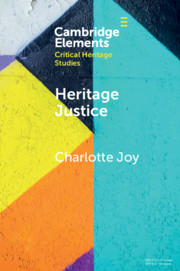Element contents
Heritage Justice
Published online by Cambridge University Press: 26 October 2020
Summary
- Type
- Element
- Information
- Online ISBN: 9781108900669Publisher: Cambridge University PressPrint publication: 19 November 2020
Bibliography
- 17
- Cited by



